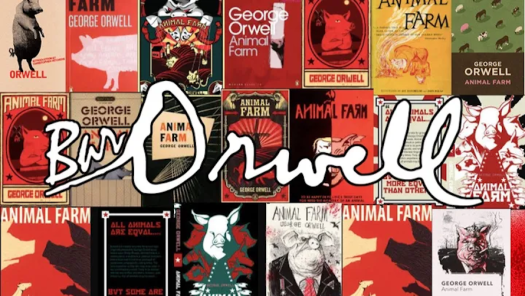"Listening to a wide variety of music and actually performing a wide variety of music are two very different things," says guitarist Geordie Haley. Growing up with folk music, but settling on jazz as a teenager caused Haley to realize that in order to make a living through music, the ability to adapt many different musical styles would serve him well. "These days every 'jazz' trained guitar player I know on the various Canadian scenes has at least five or six different 'bags'," he notes. "The growth of the music industry has made it imperative to know the basics of various guitar styles, and to own the gear to make the authentic-sounding music."
Over the past 30 years, Haley's career has taken him from New Brunswick to Montreal to Toronto and now Halifax, learning and teaching everything there is to know about the guitar. It's an ongoing process.
"The pedagogy of guitar, let alone jazz guitar, has increased exponentially since I began playing. There are so many articles, methods and DVDs. I have students who can play like crazy, and everything they know is from YouTube!"
Haley has showcased his diverse talents in many situations over the past decade. There's his Delta East Trio, in which tablas open up his playing to Indian motifs. There's Polar Bears, a straight-up jazz trio with a conventional bass and drums rhythm section. There's his Everytime Band, which features a wide palette of improvisation that includes the vocal gymnastics of Christine Duncan and the laptop manipulation of Eugene Martynec. Most recently, though, is Sculptures, a solo guitar record that sums up of many of his playing and preparation techniques developed over three decades.
"Sculptures was built slowly over a year, and then produced in a very short period of time. I had, through extensive experimentation, come up with some interesting sounds using a telecaster with a Hipshot Trilogy bridge. This tool allows you to have a mini whammy bar on each string. You can alter the tuning of each string down a major third. I then used all the same string gauges, so that the unwound strings in the bass position really rattled. The slackness of the strings allowed for stable preparations. These preparations included a dobro bridge, a tenor banjo capo, and a piezo pick up at the headstock. A lot of what you hear on the record is one guitar recorded six different ways at the same time."
What results is an indescribable sound combining melody, harmony, dissonance, percussive noises and microtonal filigrees all at the same time. Yet this is not an aural assault. Haley is certainly capable of creating strident and bizarre noise, but, as he puts it "the other part of the process, after knowing how to get sounds quickly, is [choosing] where and when to use them."
In terms of gear, Haley has amassed a treasure trove over the years. "I've been really lucky to have instruments fall into my hands, either really cheap or in one case given to me for free. The acoustic guitar I play is made by a draft dodger I know who lives outside of Fredericton, named Jon Soderman. I have a guitar synthesizer, that if you find it on eBay now it's about 3 grand, but I paid about $100 for both the guitar and the synth. Pat Metheny played one, Robert Fripp played one, Bill Frisell too. My other solid body was given to me by a student of mine, bless his heart. He found it at a pawn shop." Pedals include everything from modern digital loopers to classic analog distortion. With such a variety of tools at his disposal, he's not wedded to any one style of playing: "I pick, pluck, scrape, strum, whack, tap, and pinch the guitar," he says wryly.
What brings it all together is Haley's ability to come up with vivid contexts for whatever combinations of technique and instrumentation he chooses. Being able to execute a spectrum of sounds and have it affect people again and again is his ultimate goal. "All types of music have been shown to enhance the learning and healing process and to elevate the spiritual well being of humans. That has become my main thesis over the years."
Over the past 30 years, Haley's career has taken him from New Brunswick to Montreal to Toronto and now Halifax, learning and teaching everything there is to know about the guitar. It's an ongoing process.
"The pedagogy of guitar, let alone jazz guitar, has increased exponentially since I began playing. There are so many articles, methods and DVDs. I have students who can play like crazy, and everything they know is from YouTube!"
Haley has showcased his diverse talents in many situations over the past decade. There's his Delta East Trio, in which tablas open up his playing to Indian motifs. There's Polar Bears, a straight-up jazz trio with a conventional bass and drums rhythm section. There's his Everytime Band, which features a wide palette of improvisation that includes the vocal gymnastics of Christine Duncan and the laptop manipulation of Eugene Martynec. Most recently, though, is Sculptures, a solo guitar record that sums up of many of his playing and preparation techniques developed over three decades.
"Sculptures was built slowly over a year, and then produced in a very short period of time. I had, through extensive experimentation, come up with some interesting sounds using a telecaster with a Hipshot Trilogy bridge. This tool allows you to have a mini whammy bar on each string. You can alter the tuning of each string down a major third. I then used all the same string gauges, so that the unwound strings in the bass position really rattled. The slackness of the strings allowed for stable preparations. These preparations included a dobro bridge, a tenor banjo capo, and a piezo pick up at the headstock. A lot of what you hear on the record is one guitar recorded six different ways at the same time."
What results is an indescribable sound combining melody, harmony, dissonance, percussive noises and microtonal filigrees all at the same time. Yet this is not an aural assault. Haley is certainly capable of creating strident and bizarre noise, but, as he puts it "the other part of the process, after knowing how to get sounds quickly, is [choosing] where and when to use them."
In terms of gear, Haley has amassed a treasure trove over the years. "I've been really lucky to have instruments fall into my hands, either really cheap or in one case given to me for free. The acoustic guitar I play is made by a draft dodger I know who lives outside of Fredericton, named Jon Soderman. I have a guitar synthesizer, that if you find it on eBay now it's about 3 grand, but I paid about $100 for both the guitar and the synth. Pat Metheny played one, Robert Fripp played one, Bill Frisell too. My other solid body was given to me by a student of mine, bless his heart. He found it at a pawn shop." Pedals include everything from modern digital loopers to classic analog distortion. With such a variety of tools at his disposal, he's not wedded to any one style of playing: "I pick, pluck, scrape, strum, whack, tap, and pinch the guitar," he says wryly.
What brings it all together is Haley's ability to come up with vivid contexts for whatever combinations of technique and instrumentation he chooses. Being able to execute a spectrum of sounds and have it affect people again and again is his ultimate goal. "All types of music have been shown to enhance the learning and healing process and to elevate the spiritual well being of humans. That has become my main thesis over the years."




